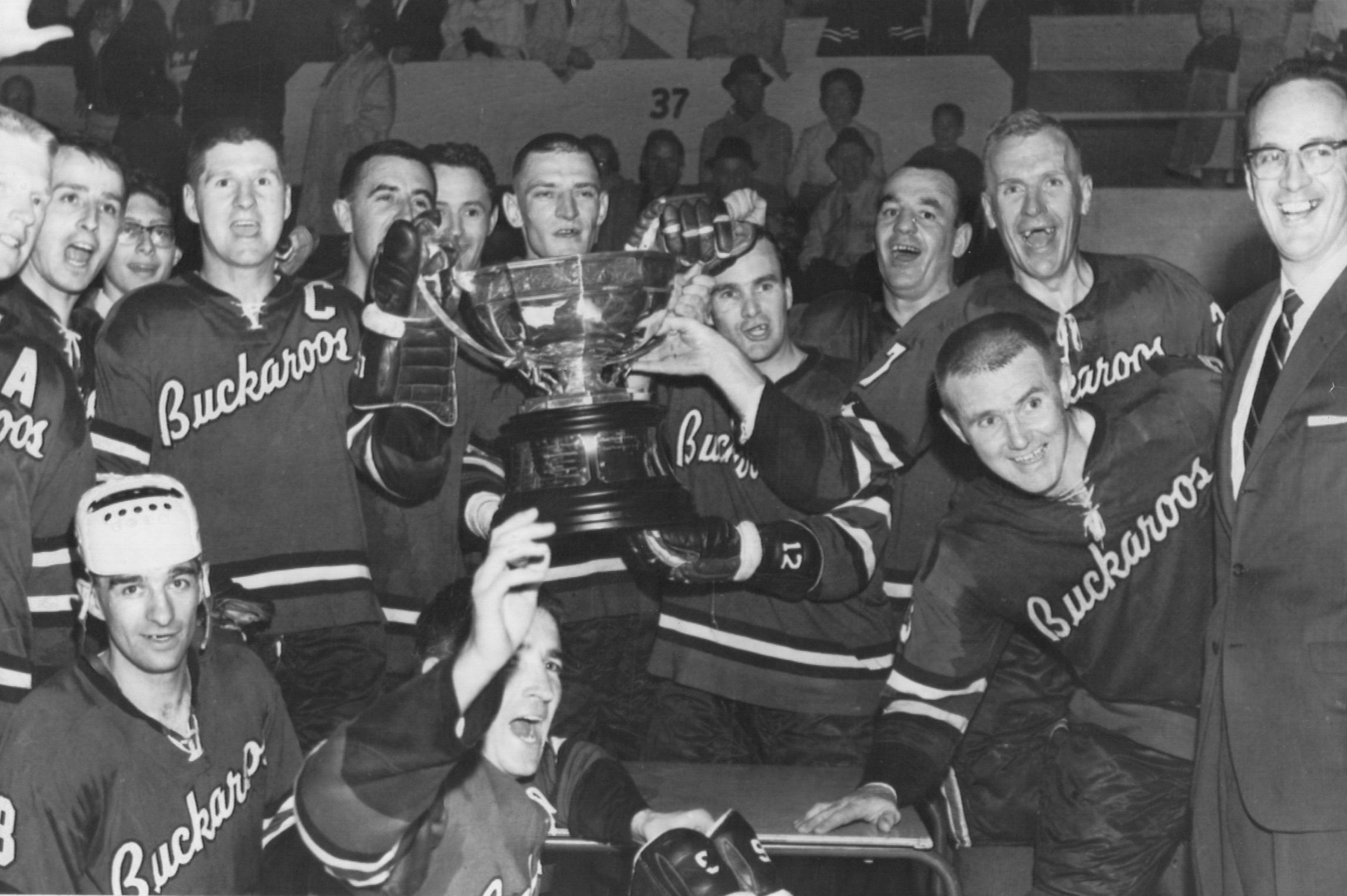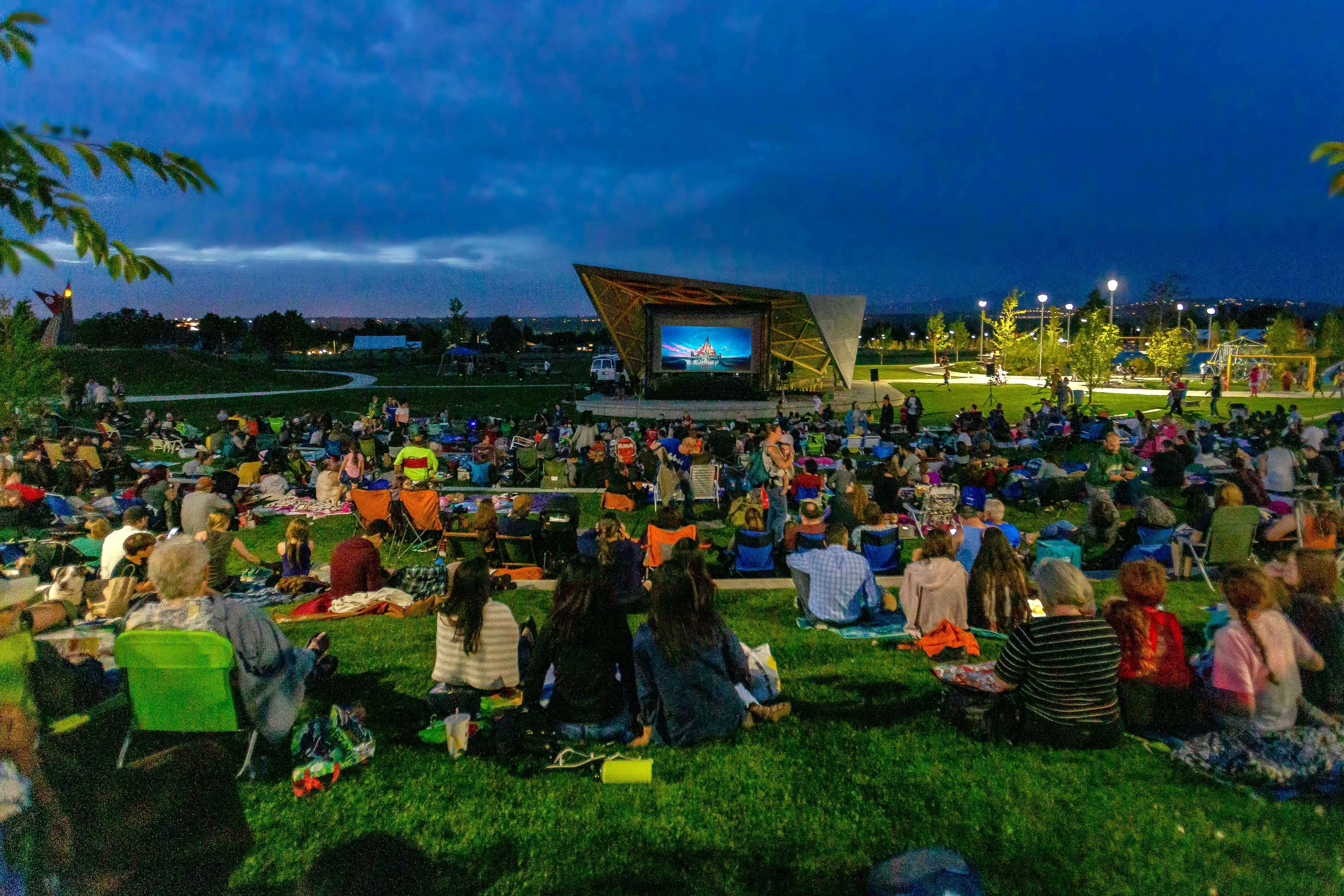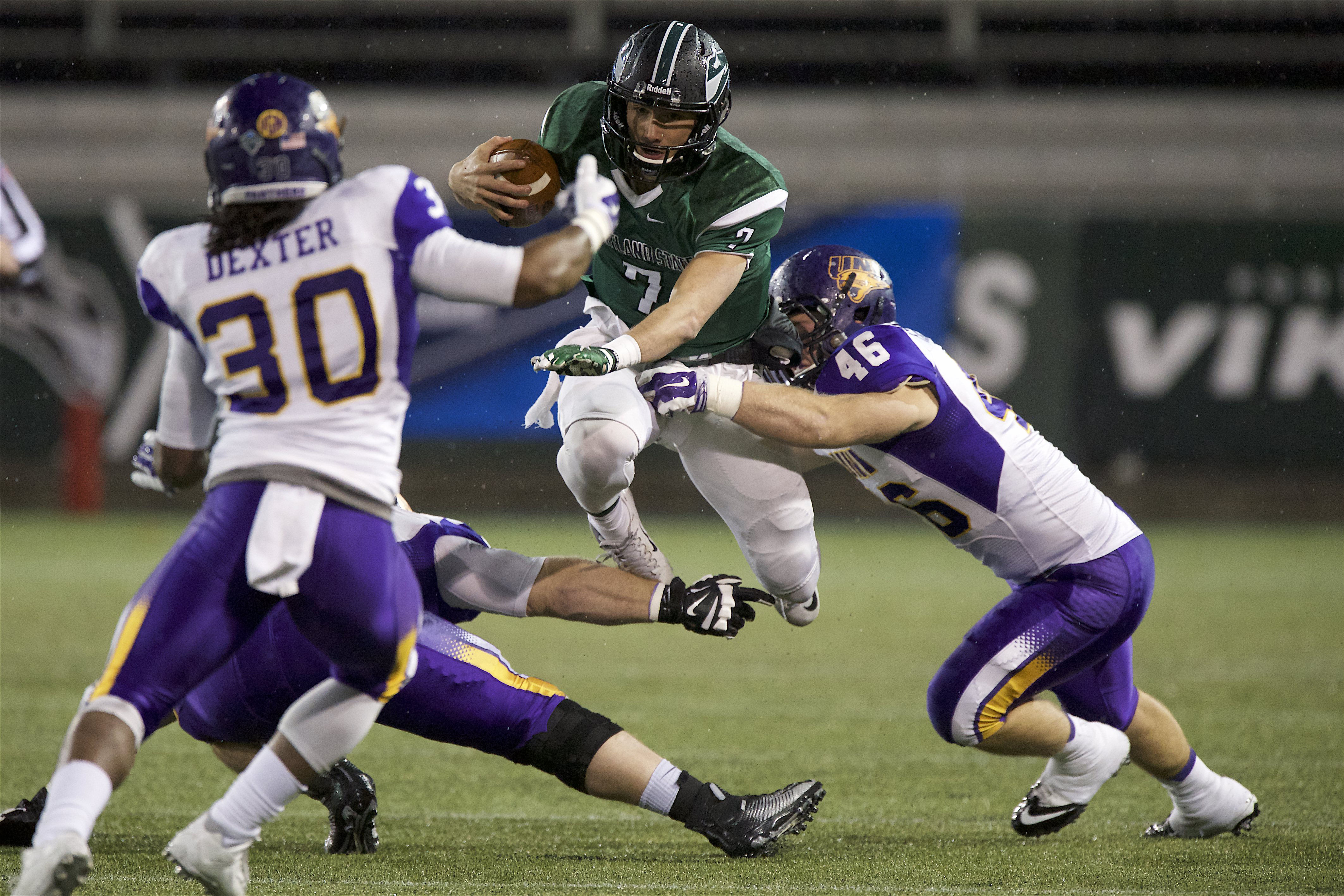
Portland State May Finally Have a Great Football Team
At least 100,000 Portland State alumni live in the metro area—more than enough to fill a football stadium.
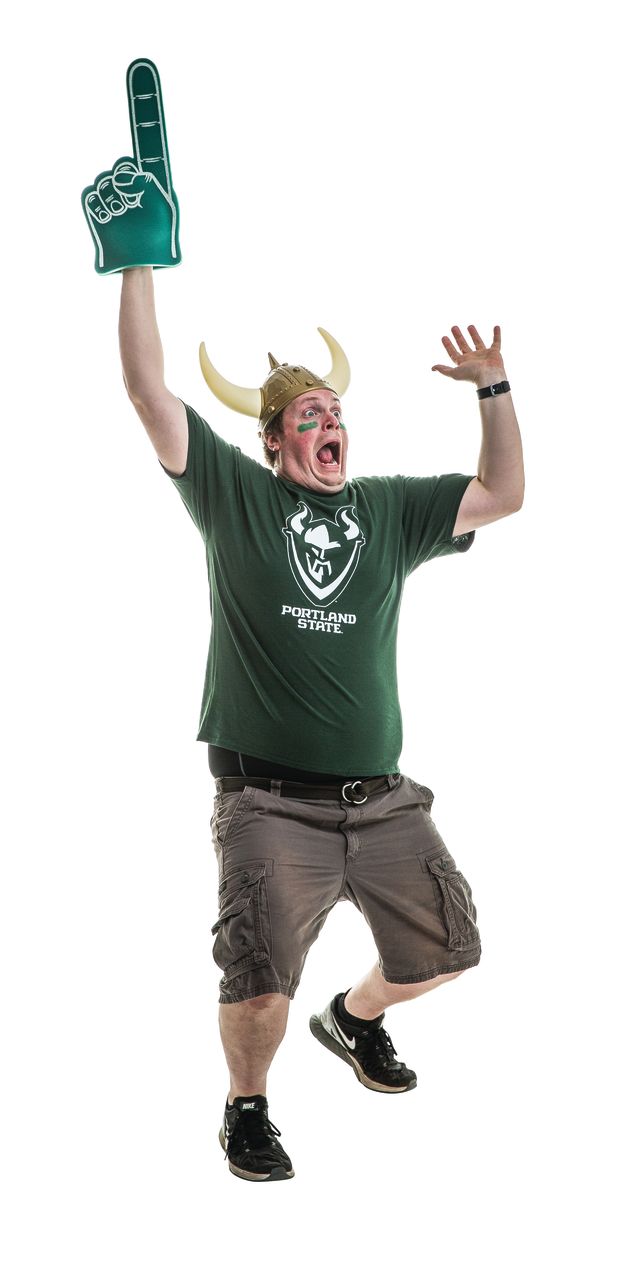
Image: Stuart Mullenberg
But early in the first quarter of last October’s home game against Montana State, you could still make out the word “PORTLAND” spelled out with empty seats in the east stands of Providence Park. Hundreds of Montana State football fans—many of whom had road-tripped 11 hours to get there—made most of the noise in the stadium as the Portland State Vikings kicked off against the Bobcats. Otherwise, the atmosphere was somewhat muted. Providence Park packs in nearly 21,000 for soccer games. This game drew 8,110—at that point in the season, it was Portland State’s largest home crowd since 2011.
The Montana State faithful expected to see their team, the Big Sky Conference preseason favorite, beat the Vikings for a ninth straight time, and reasonably so. Portland State was coming off a 2014 season of three wins, nine losses, and one fired coach.
Instead, PSU scored a touchdown on each of its first eight possessions. Quarterback Alex Kuresa, an undersize junior-college transfer, spent the afternoon slinging quick-strike passes, running the ball, occasionally lining up as a receiver, and throwing reckless blocks for tailback David Jones. By the time the Vikings took a 42–21 lead early in the third quarter, the home fans had no trouble outshouting the visitors. When a PSU field goal made it 59–42 late in the fourth quarter, dejected Bobcat fans were already on West Burnside. They’d just been introduced to #Barnyball.
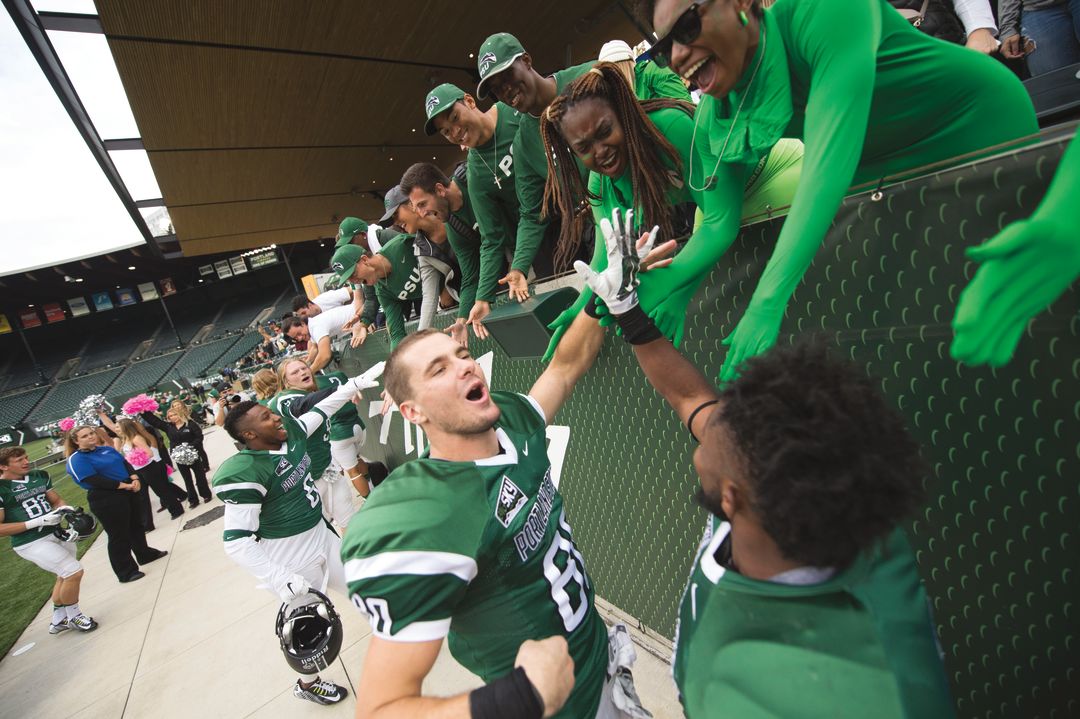
Safety Demetrius Jackson (left, with helmet), wide receiver Trent Riley, and cornerback Kahlil Dawson celebrate with fans.
When Portland State fired its last head coach, Nigel Burton, an interim athletic director handed an interim contract to the team’s offensive coordinator, Bruce Barnum—almost as if Barnum just happened to be hanging around the football office on the right day in November 2014. He got a one-year contract, and Barnum’s own son didn’t let him forget it, setting up a countdown on his father’s cellphone to the inevitable end of what the coach liked to call his “12-month interview.”
But months before that timer hit zero, Barnum had landed a new five-year deal, and Portland State was riding an unbelievable winning streak. The jovial, heavyset, 52-year-old native of Vancouver, Washington, transformed his Vikings into a sports movie—part Bad News Bears, part Rudy.
Portland State and its Big Sky rivals play in the wonkily named Football Championship Subdivision, the lower-budget, lower-scholarship little brother to the money-soaked Football Bowl Subdivision. FCS is full of schools too big for the romantic purity of small-college sports, but way too small to compete regularly with the Alabamas and Oregons of FBS. Even so, Barnum debuted with a shocking road win over Washington State, part of the big-time Pac-12. Later, the Vikings went to North Texas and won 66–7, the biggest win ever for an FCS team over an FBS team. (The “Mean Green” fired their coach moments after the game.)
A remarkable season rolled on. At one point, with five wins and one loss, Barnum’s team fleetingly enjoyed unofficial bragging rights over the Ducks and Beavers, which had both suffered more losses and both lost to Washington State. Barnum wound up as the national FCS coach of the year and led the Vikings to their first playoff appearance since 2000—just the school’s second ever.
The behind-the-scenes changes were not revolutionary. Bringing a fast-paced, frenetic, and high-scoring offensive style, Barnum kept most of the squad’s previous players, adding only a few key recruits and transfers, most notably Kuresa, who would end up being named the Big Sky’s newcomer of the year. Asked to name the biggest difference between him and his predecessor, Barnum hesitates. “This one’s hard because I want to make sure I don’t attack the other guy,” he says, “but I simplified the student-athlete’s world. I just treated people right.”
The results were impressive; within the context of Portland State football, almost miraculous. Since their first season in 1947, the Viks have occasionally produced great players, like quarterbacks June Jones and Neil Lomax and current NFL tight end Julius Thomas. Two coaches achieved minor-legend status (as well as awesome nicknames): Mouse Davis and Pokey Allen. But since the 1980s, the program hasn’t really felt like it mattered. Not to Portland, and only barely to the Portland State community.
“I’m inclined to think we have a better chance at getting more media coverage for basketball than we do for football,” PSU president Wim Wiewel told sports site Viking Tales at the beginning of 2015, shortly after Barnum was hired. But he added that “with the right mix of ingredients,” the football team has “a very reasonable chance to put on a good show and get attention here. We’ll never be at the level as the Ducks or Beavers, but we don’t need that.”
As a buzzy urban university, Portland State itself is as indelibly integrated in Portland life as Pioneer Courthouse Square, its intellectual contribution as important to the civic culture as public transportation or the food scene. To those who play and coach the game, of course, football is a natural part of the educational mission, something that teaches leadership and discipline. Nobody buys T-shirts with an urban studies professor’s name on the back, after all. (OK, in Portland, someone might.)
A new Viking season starts at Providence Park on September 3. Will the team ever find a place in Portland’s predictably weird sports culture? The Trail Blazers locked in the city’s love back in the ’70s. True to our contrarian nature, the city has embraced not one but two pro soccer teams. Portlanders who didn’t even attend Oregon or Oregon State root for them as their own. Portland State football? Barnum and his players are a phenomenon in search of a following.
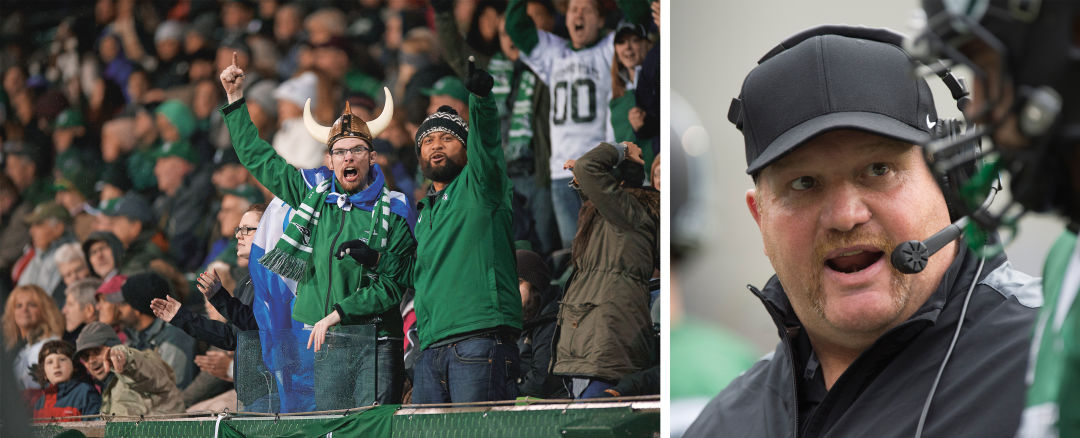
Vikings fans in horned regalia (left) and Portland State head coach Bruce Barnum
A big man, Bruce Barnum looks like the lineman he once was, with a youthfulness that suggests John Goodman’s jail-break buddy in Raising Arizona, only bald. Folksy and blunt, he’s fond of saying things like “long-ass time,” and calls opponents from states like North Dakota and Iowa “flatlanders.” Growing up in Vancouver, he was recruited by Pokey Allen but ended up at Eastern Washington, where he played in only one official game. (Barnum says he was put in just because they felt sorry for him.) He transitioned easily to assistant coaching, starting out in Northwest high schools and then at Western Washington, Cornell (twice), American International, the US Coast Guard Academy, and Idaho State. He returned home to the ’Couve in 2010 to become Burton’s offensive coordinator.
Last season, Barnum ran up a $1,750 tab at the Kingston on SW Morrison Street, a block from Providence Park, without buying a single drink for himself. At the season’s outset, the coach had promised to buy beers for anyone who showed up at the bar after home games—if the Vikings won. Whether it was the promise of free alcohol or the novelty of actually winning, or both, Barnum’s ploy worked: the 8,000-plus who came to the Montana State game represented a nice jump from the home opener three weeks before (5,017 against Western Oregon), and more than 11,000 people came to the October 31 game against the University of Montana. Barnum had budgeted $250 for beers after each of the Viking’s first two games, but upped the ante to $500 for Montana State and Montana, the Big Sky’s two traditional powers.
“These people haven’t beaten Montana in a long-ass time,” Barnum told his wife when she fretted about the extra outlay, since the money came out of Barnum’s own low-six-figure salary. “I want to make sure they celebrate.” During Root Sports’ sideline coverage at the end of the Montana State game (one of the team’s only televised home contests), a camera caught Barnum saying, with a sideways grin, “That just cost me a lot of money at the Kingston.”
If Barnyball is about anything, it’s about building a team and a community in what had been a vacuum. The coach bans jewelry and music during team activities to keep the players’ focus on their work. Portland State rarely has the budget for airfare, so road trips can mean long bus rides to places like San Luis Obispo and Pocatello. Barnum works to turn those expeditions into bonding experiences; the ongoing voyage he called the “Americana tour” included a stop at Alcatraz en route to Cal Poly and a barbecue in the Tri-Cities on the way to Cheney to face Eastern Washington. The buses weren’t always fancy enough to have power outlets. One by one, the players’ phones died.
“All of sudden they’re playing cards,” says Barnum. “I’ve got LA talking to Beaverton, talking to Salt Lake City, talking to Lynden, Washington. Then they’re coming back here and hanging out together.”
Barnum’s personal touch is on everything. Kuresa, the star quarterback, and his wife, Madison, live in Beaverton with their young daughter, making them somewhat typical, nontraditional PSU students. When Kuresa was considering a transfer from Snow College in Utah, Barnum focused his recruitment efforts on Madison.
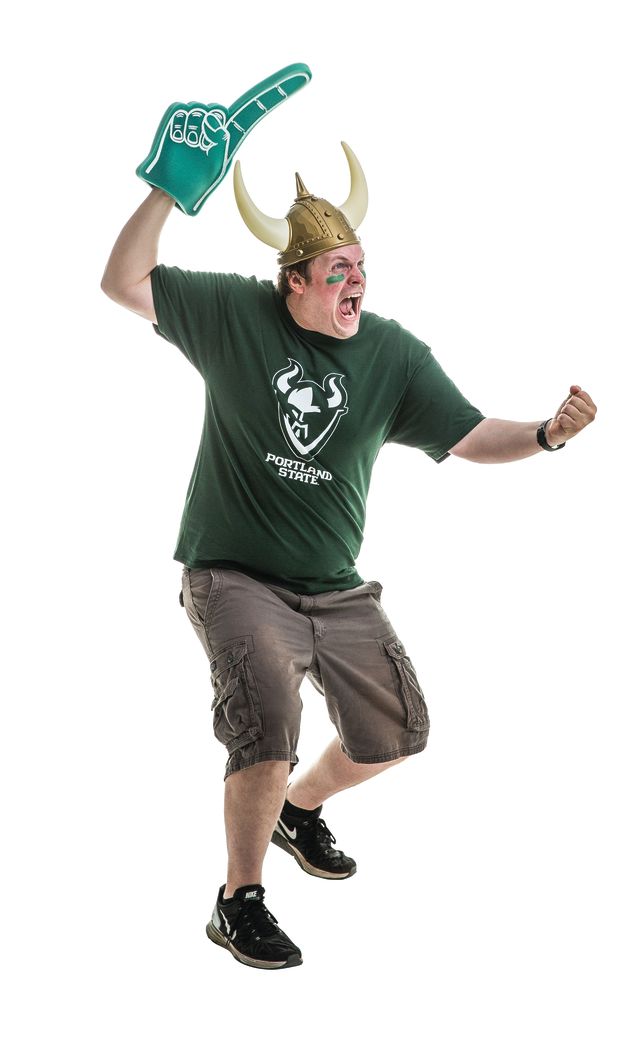
Image: Stuart Mullenberg
“I got a phone call from Coach Barnum before he called Alex, which I found super different, because you know, coaches never want to talk to the wives,” says Madison Kuresa, who was 20 at the time. “He asked me if I had any questions, and made me feel really comfortable. He said, ‘This is all about you, Madison. Alex can come later.’”
“There’s a difference between liking your players and really loving what you do and loving the players,” says former PSU quarterback and current associate athletic director Tygue Howland. He adds that “Kids will run through a wall for Barny,” repeating a well-worn football aphorism that seems, for once, genuine.
That culture is infectious. When fans “streetgate” outside of the Cheerful Bullpen before home games, athletic director Mark Rountree, a Louisiana native, makes gumbo. He started out last season making enough to feed 80 people, and ran out in under an hour. “I got a bigger pot,” he says.
Slowly, the infrastructure is catching up. In 2013, PSU announced plans to renovate the 1,500-seat Peter Stott Center into a larger, architecturally striking Viking Pavilion—a $50 million joint project with Oregon Health & Science University that will include new training and academic facilities for football (and all other teams). This past off-season the school unveiled new Nike branding and logos. A marketing drive aims to make mascot Victor E. Viking (really!) into a more visible figure around town.
Since 2014, PSU has required its football program to be self-sustaining, the budget coming entirely from athletics revenue and donors, not the university coffers. As is the case for most lower-tier football schools, PSU makes money by playing road games against major teams, essentially agreeing to accept a lopsided loss in exchange for a financial life preserver. The Viks received $525,000 to serve as Washington State’s opening-day patsy, and another $415,000 to give North Texas a sure win. The Viks, of course, won those games. This year PSU plays Washington and San Jose State. If history repeats—and don’t try to get Barnum or Kuresa to say it won’t—the school could have trouble scheduling money games in future years.
“I told the staff, jokingly, ‘These FBS teams, we can get them in overtime, give them a hell of a show, and then lose,’” Barnum says, adding that Oregon and Oregon State are both on future schedules. “I just have to keep the program running.”

Quarterback Alex Kuresa running the ball in last December’s playoff game againt Northern Iowa
On a Saturday this past April, people crowd the South Park Blocks, as usual, for the Portland Farmers Market. It’s also the Vikings’ annual “spring game,” and the Viking Pavilion’s groundbreaking ceremony. Barnum is splitting his time entertaining recruits, shaking hands, and, literally, kissing babies. “Want to say hi to Coach?” a mom asks her toddler, just as a player runs by and pats Barnum on the ass. “I wish I could have thanked every single person there,” he tells me later.
“Are we supposed to be excited about this?” I hear a bespectacled guy say to his female companion as they walk by the practice field, hot dogs in hand. They tell me they are Eric and Carrie, Portland State students living on campus.
“Our door was open and we heard someone say they were offering free hot dogs, so we walked over,” says Carrie. A speech and hearing sciences major and member of the PSU Super Smash Club—that’s video games—Eric acknowledges that he’s completely unaware of the 2015 team’s accomplishments. “It’s not Division I, right?” he asks. (Actually, the FCS and FBS are both part of college sports’ Division I, but separate parts. OK, it’s complicated.) When I explain what they are watching is just a scrimmage, he jokes with a touch of sarcasm, “Oh, it’s the spring game, of course!”
Students like Carrie and Eric are hardly the minority. I’ve talked to alums who don’t know Portland State has a team. At the playoff matchup, I met an alum attending her first PSU game, 30-some years after graduating. Even when the national media discovered the Vikings after the North Texas win, there were small slights. A lengthy online Sports Illustrated feature on Barnum was originally headlined “Portland State Pilots taking nation by storm.” (The Pilots are from the University of Portland.)
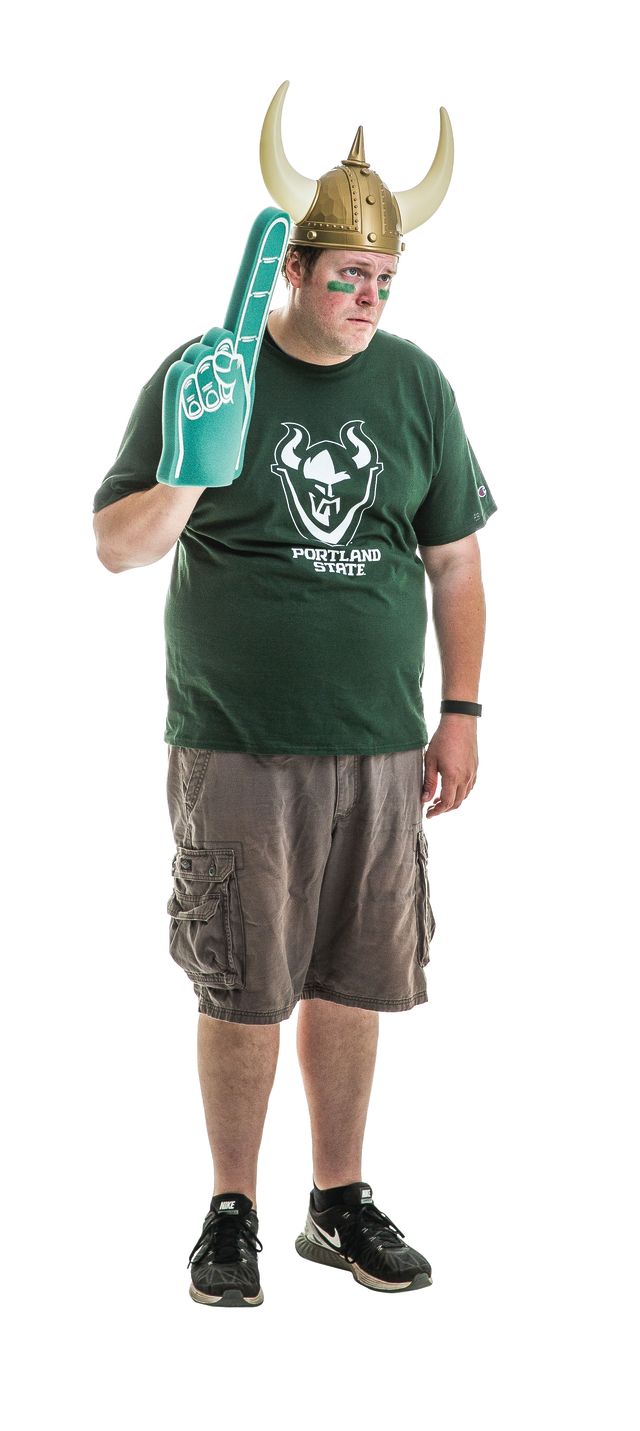
Image: Stuart Mullenberg
“I still don’t think we have any respect. I really don’t. It’s our job to show people, you know, we are going to have a winning season every year here,” the coach says. Barnum thought PSU was a place where he could win. He was right. But can the Vikings become Portland’s college football team?
“If I had that answer, somebody would have already done it,” says Barnum. “I think if people watch my kids, we’ll win more games. Everybody says if you win, they’ll come. That’s a two-way street.”
It’s still possible to say you were there before PSU football was popular, like seeing Nirvana at Satyricon. Barnum’s Vikings offer an unusual combination of Portland’s beloved grassroots culture and the most popular sport in America. A coach who buys fans beers? An athletic director who serves gumbo? That’s about as scrappy as college football gets—and maybe it’s working.
Even as the Vikings’ 2015 season ended with a 29–17 playoff loss to Northern Iowa, an odd electricity clung to the fan section. The coach and players were clearly devastated by the loss. But for a school that was always expected to lose, something felt different. Many players stayed on the field afterwards, applauding the crowd, and listening to the chants: “BAR-NY-BALL! BAR-NY-BALL! BAR-NY-BALL!”
“We didn’t put Portland State on the map,” Barnum says. “We just had people recognize what a jewel it is. Athletics haven’t been that cool in a long-ass time around here.”
Top Image: Courtesy Troy Wayrynen/Portland State Athletics
